
Identification of genetic interactions in Bacillus subtilis cell division. Congratulations, Byoung-Mo Koo, Carol Gross, and all involved!
@cp-cellsystems.bsky.social #subtiwiki
www.cell.com/cell-systems...
@crodrigueslab.bsky.social
Understanding how bacteria develop into one of the toughest cell types on Earth - Spores Principal Investigator | Reader www.rodrigueslab.com

Identification of genetic interactions in Bacillus subtilis cell division. Congratulations, Byoung-Mo Koo, Carol Gross, and all involved!
@cp-cellsystems.bsky.social #subtiwiki
www.cell.com/cell-systems...

Cryo-EM identifies F-ENA of Bacillus thuringiensis as a widespread family of endospore appendages across Firmicutes
@natcomms.nature.com Mike Sleutel et al from Han Remaut
w/ Marina Aspholm @jerryknowsnothing.bsky.social @mkrupovic.bsky.social @dbaquero.bsky.social
www.nature.com/articles/s41...

Metals are essential for life, but they can also be toxic. Here, @johnhelmann.bsky.social gives an excellent overview on bacterial metal physiology!
@natrevmicro.nature.com #SubtiWiki
www.nature.com/articles/s41...
once upon a time "...the bacterial ribosome was thought to be composed of a fixed set of ribosomal proteins (RPs) and ribosomal RNA (rRNA), ensuring precise translation"
ribosomologists take note: the role of heterogeneity of the ribosomes in the bacterial stress response 👇
#RNASky #MicroSky

Nice to see many aspects of my team's research in this review.
www.sciencedirect.com/science/arti...

Happy to see our collaborative work on the contractile injection system (CIS) in Streptomyces published. We show that the membrane protein CisA gives Streptomyces CIS a licence to kill.
@pilhoferlab.bsky.social & Bastien Casu, @joesallmen.bsky.social #MicroSky
elifesciences.org/articles/104...
Thanks Jörg.
04.07.2025 14:10 — 👍 0 🔁 0 💬 0 📌 0Thanks Dirk!
04.07.2025 14:10 — 👍 1 🔁 0 💬 0 📌 0Thanks for that. Will definitely do that next time!
04.07.2025 12:17 — 👍 1 🔁 0 💬 0 📌 0New tenure track assistant professor position in molecular microbiology in our department @dmf-unil.bsky.social @unil.bsky.social! We are casting a wide net for an experimental molecular microbiologist. Apply here: wwwfbm.unil.ch/releve/appli...
10.06.2025 13:53 — 👍 112 🔁 162 💬 0 📌 8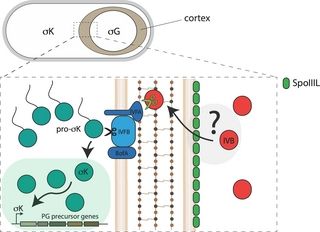
Checkout the latest paper from our lab in PLOS Genetics: dx.plos.org/10.1371/jour...
Thanks to our wonderful collaborators, @sgribaldo.bsky.social, @cavalab.bsky.social, @perbullough.bsky.social and Cecile Morlot.
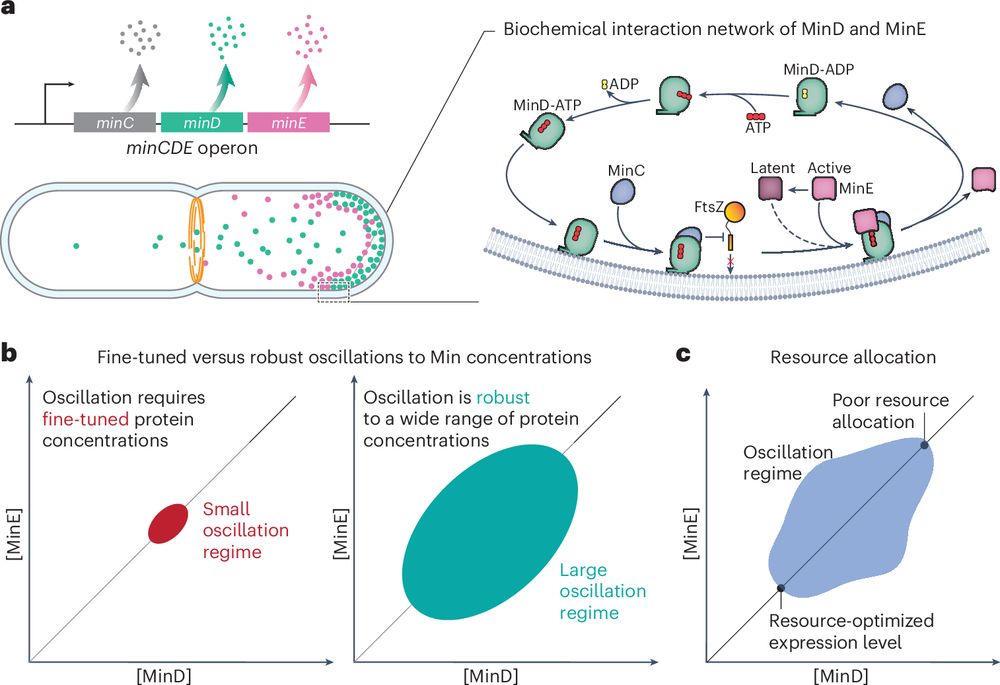
Our paper on the E. coli Min system in vivo with @physicsoflifelmu.bsky.social & Judy Kim (UCSD) has been published in Nature Physics today. Tight integration of experiment and theory, and physiology and biophysics. Incredible perseverance of our young students. rdcu.be/ekIpO
05.05.2025 14:53 — 👍 36 🔁 16 💬 1 📌 2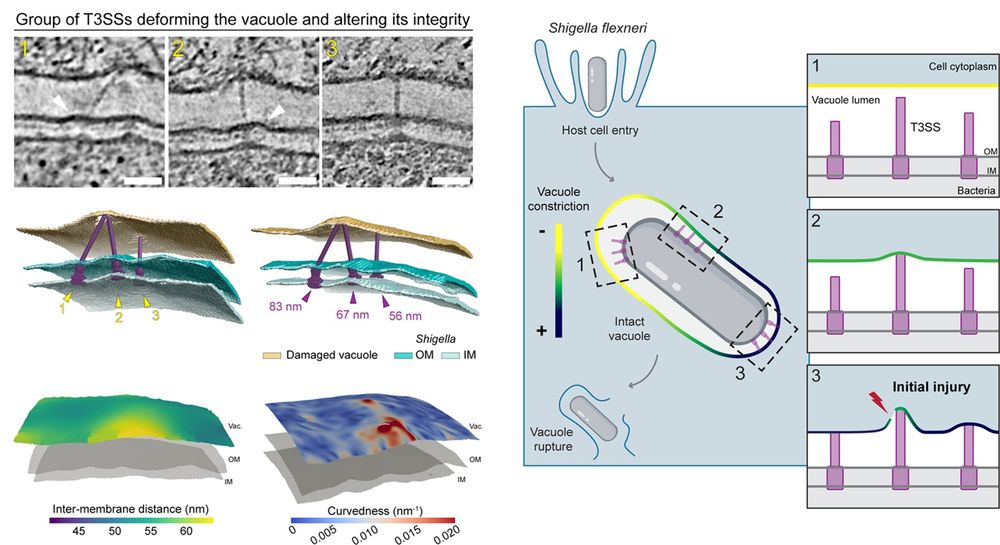
Left: Group of three T3SS localizing in the same zone of the bacteria surface. T3SS n°1 and 2 contact, deform, and perforate the vacuole membrane at the same spot. T3SS n°1 needle (83 nm) is long and seems to deviate from basal body axis showing that strong constraints between T3SS and the vacuole at are play. The locally relaxed vacuole to bacteria space (~50–55 nm) potentially limits additional damage by the T3SS n°3 needle (56 nm) that only slightly deforms the membrane. Right: Model of initial vacuolar membrane breaching by T3SS-induced mechanoporation. Shigella actively enters host cells in a specialized endomembrane compartment, the vacuole, that is rapidly injured and ruptured for cytosolic access. After host cell entry, the vacuole membrane is intact and tightly juxtaposed to the surface of Shigella, permitting contact between T3SSs and the endomembrane. In the authors’ proposed model, vacuole membrane injury is supported both by the vacuole tightness and the length of individual T3SSs.
How do intracellular #bacteria breach vacuoles to enter the host cytosol? @leaswistak.bsky.social @matthijnvos.bsky.social @enningalab.bsky.social &co show that #Shigella uses its T3SS system to damage endomembranes via mechanoporation to initiate cytosolic access @plosbiology.org 🧪 plos.io/4jXrr9Z
06.05.2025 12:46 — 👍 48 🔁 22 💬 2 📌 4Checkout out our computational framework for studying toroidal membranes of biological dimensions, present at division and fission sites. We studied lipid behaviour at these sites but also simulated membrane fission. Collaboration with @chrislbgraham.bsky.social and @pstansfeld.bsky.social
06.05.2025 07:09 — 👍 6 🔁 1 💬 0 📌 0
Left: The atomic model of the PS2 lattice is shown in top and side views. PS2 hexamers are repeated in the 2D sheet with a lattice constant of 176 Å. Each PS2 monomer is colored and labeled separately within the hexamer, which repeats throughout the lattice (with pore dimensions highlighted). The side view of the lattice shows the smooth surface facing the extracellular space and rough surface with coiled-coil segments protruding towards the MM. Top right: Interactions at the hexameric and trimeric interfaces are stabilized by both hydrophilic and hydrophobic residues. Bottom right: A cell envelope tomogram was used to overlay the cryo-EM structure of the S-layer onto the in situ S-layer tomographic density. A single slice of the tomogram is shown, with the overlayed PS2 S-layer lattice in green and the tomogram in grayscale. The S-layer (surface layer), MM (mycomembrane), IM (inner membrane), and Cytosol are labeled.
The unique #CellEnvelope of #corynebacteria: @tbharat-lab.bsky.social &co map the C. glutamicum cell surface, revealing a patchy S-layer & specific assembly of the PS2 protein, thereby informing our understanding of cell envelopes that contain #MycolicAcids @plosbiology.org 🧪 plos.io/3Y6JNgw
22.04.2025 15:40 — 👍 35 🔁 14 💬 1 📌 4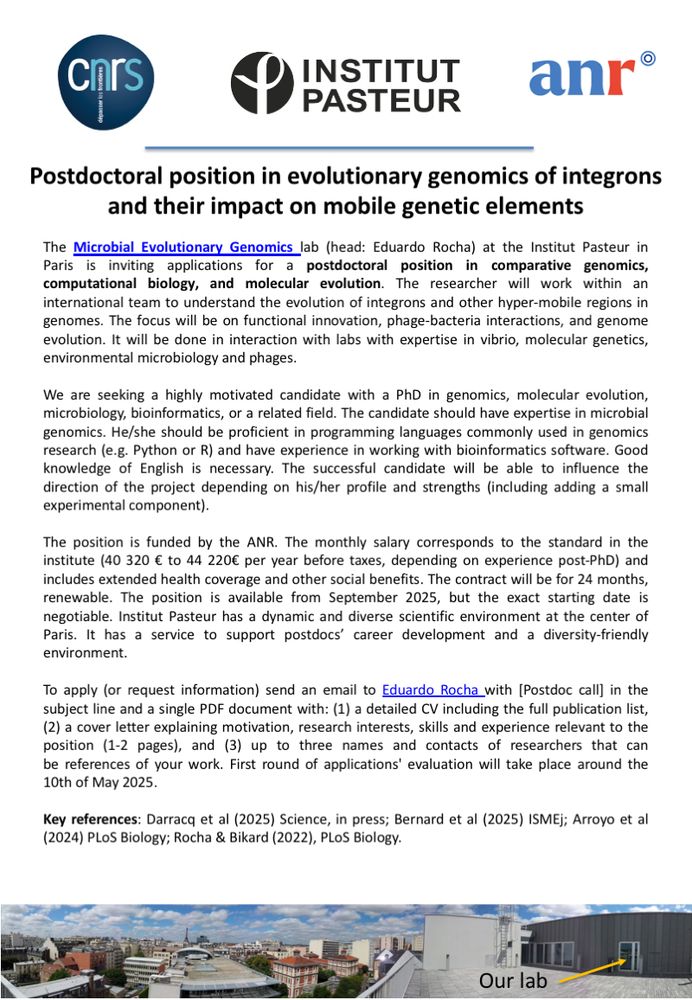
New postdoc position in our lab (2 y+): evolutionary genomics of integrons and MGEs with focus on vibrio-phage interactions. Great environment @pasteur.fr for science, career building. Super collaborators @celineloot.bsky.social @amazeld.bsky.social @fredoleroux.bsky.social 3 weeks to apply!
16.04.2025 07:14 — 👍 100 🔁 126 💬 2 📌 1The preprint is out now - we describe how Bacillus spores restart energy metabolism as they exit dormancy! Dormant spores are dehydrated, very robust for long periods, but when they sense nutrient availability, they can germinate rapidly to make the most of the favourable environmental conditions 1/
18.03.2025 13:55 — 👍 10 🔁 4 💬 1 📌 1Easter is approaching but so is the abstract deadline for the Great Wall Symposium: May 1st!
If you want a chance to present at the best conference, focused on the Bacterial Cell Envelope, crack on!
Sicily, September 15-17th 2025
thegreatwall-symposium.org

Happy to share Asha Joseph and Inchara Adhikashreni's latest work from the lab, describing replisome speed variation in Caulobacter!
www.cell.com/current-biol...

Schematic illustrating the structural changes undergone by MukBEF SMC complex during DNA capture and ingestion.
How do SMC complexes capture DNA? 🧪
Led by Frank Bürmann, Jan Löwe’s & Mark Dillingham’s groups have identified the directional loading mechanism the bacterial SMC complex MukBEF uses to capture & ingest DNA, & found a phage inhibitor to this pathway.
Read more: tinyurl.com/4s8nrrkk
#LMBResearch

Competent streptococci release hydrolases associated with fratricide (bacteria kill closely related cells to release DNA). The ScrI protein substitutes Thr for Ala in peptidoglycan cross bridges to confer immunity!
#MicroSky #Peptidoglycan #Competence
onlinelibrary.wiley.com/doi/10.1111/...

Bacterial growth under pressure: the surprising role of membrane microdomains
Behind the paper by Dennis Claessen on their recent @naturecomms.bsky.social publication
communities.springernature.com/posts/bacter...
Kitasatospora viridifaciens
The term "reviewer fatigue” has become familiar in scientific publishing. In this Editorial, @droutledge.bsky.social & @npariente.bsky.social discuss how we can make the peer review system more sustainable & ways that PLOS Biology is already helping to ease the burden on reviewers🧪
▶️ plos.io/41YKIRa
Have you ever seen such a huge biofilm deficiency with bslA mutant of 3610, @bacteriacities.bsky.social?
23.03.2025 13:06 — 👍 7 🔁 2 💬 0 📌 0Not. Going. To. The. US.
19.03.2025 19:59 — 👍 0 🔁 2 💬 0 📌 0
SubtiToolKit: a bioengineering kit for Bacillus subtilis and Gram-positive bacteria
@cp-trendsbiotech.bsky.social Research Article by @jcaro-astorga.bsky.social et al from @proftomellis.bsky.social
www.cell.com/trends/biote...

Left: Structural comparison of ATPγS-DppABCDF and apo-DppBCDF. Clipped view of the outward-facing substrate loading cavity in ATPγS-DppABCDF (left), the outward-facing conformation of ATPγS-DppABCDF (middle) and inward-facing conformation of apo-DppBCDF (right). Below: Two inserts showing distance changes of the two coupling helices in two states. Right: Surface representations of the ATPases in the two states viewed from membrane plane. The RecA-like domain and the helical subdomain are differentiated by color shadings. The rotation of the helical subdomain with respect to the RecA-like domain during transition from the inward-facing conformation (ATPγS-DppBCDF) to the outward-facing conformation (ATPγS-DppABCDF) is indicated.
Bacterial ABC peptide transporters are involved in processes like nutrient uptake. This study solves #cryoEM structures of the #Ecoli dipeptide #transporter DppABCDF in both apo & ATP analog-bound forms, providing insights into assembly & import mechanism 🧪 @plosbiology.org plos.io/3DxP8pU
12.03.2025 09:01 — 👍 10 🔁 2 💬 0 📌 0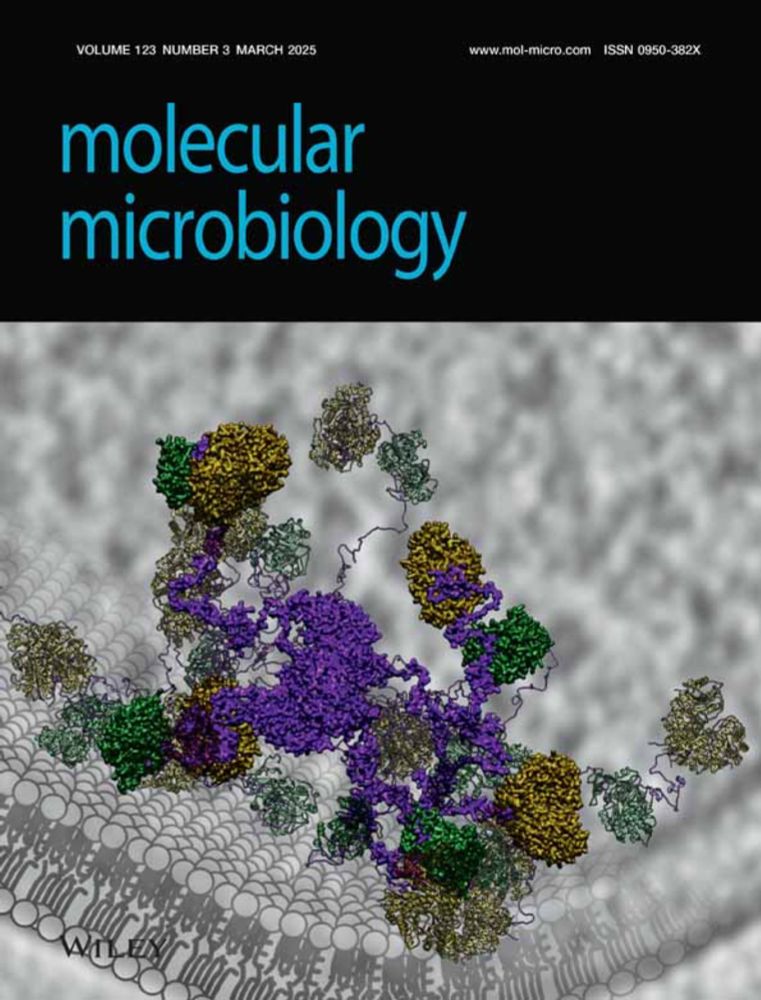
Chromatin aficionados take note:
Second of two special issues on Prokaryotic Chromosome Organization now published!
(6 review/perspective articles and 2 research articles)
Guest edited by @damelab.bsky.social
#MicroSky #Chromatin
onlinelibrary.wiley.com/toc/13652958...
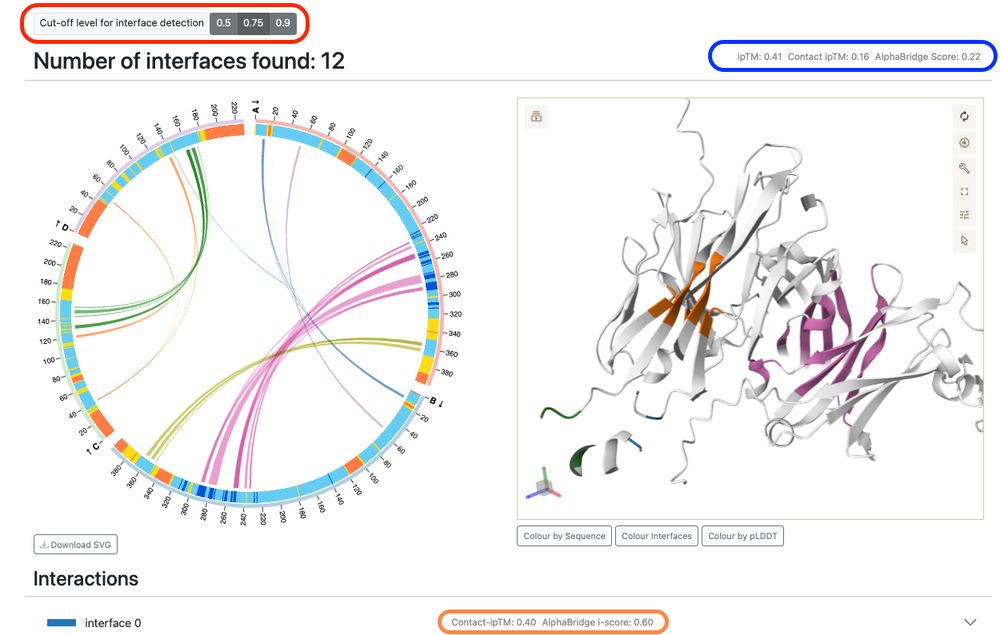
New features in #AlphaBridge implemented by @alvarezsalmoral.bsky.social
🟥 Customisable cutoff-level for filtering on weak (0.5) or strong (0.9) interactions.
🟦 Displaying the ipTM score, and the brand-new "Contact-ipTM and #AlphaBridge scores.
🟧 Per-interface #AlphaBridge scores.